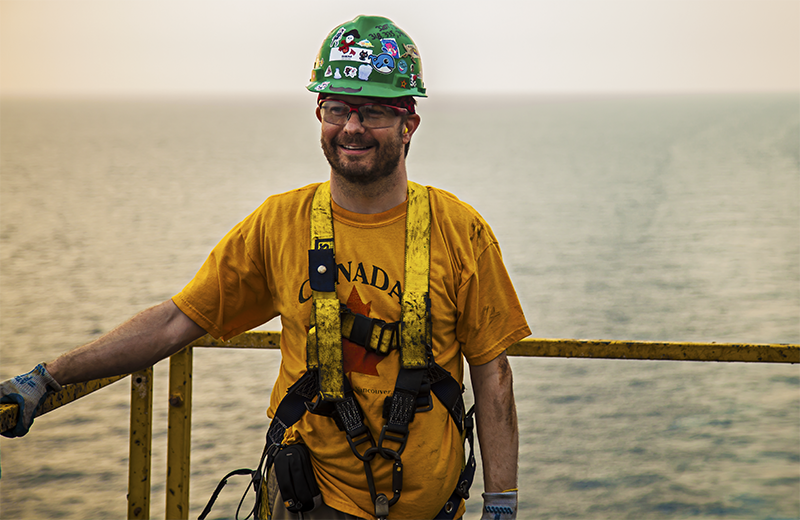
Core Curator Chad: Q & A
Before the coring begins on a JR expedition, the scientists work closing with the core curator to coordinate core sampling procedures. What is a curator doing on a research vessel you may ask? When most of us hear curator we think of someone who collects and exhibits unique historical artifacts and objects in a museum. In some aspects a core curator is doing the same. A core curator takes care of the unique ancient fossils and
other historical information found deep beneath the sea floor. These fossils are hidden in mud, clay, sand, and rock. The core
curator also ensures that these historical cores are preserved for
generations to come. To learn more about what a JR core curator does I went to Chad.
Core Curator Chad: Q & A
Q: What are the similarities and differences between what a core curator does and a museum curator?
Chad: A museum curator may care for ancient artifacts or art. My job is similar except I care for mud and rocks samples that are retrieved from the sea floor. The current generation of scientists are able to sample this material with techniques that we have available today. Throughout this sampling process I ensure that enough core material is left for future generations to study. The [core] material is valuable because it is unique to the place in the ocean where we collect these samples. I ship like the JR seldom drills in the same place twice, so the material we recover is rare and unique.
Q: What do you do before the coring starts?
Chad: I work closely with the expedition Staff Scientist, Co-chief and Science Party to determine what core samples need to be taken on the ship to meet the science objectives. For examples we take core samples for geochemistry, microbiology, sedimentology, paleontology, paleomagnetism, and physical properties on board. The JR has instruments on board that measure both physical and chemical aspects of the core samples we recover.
Q: What type of planning goes into curating cores?
Chad: Extensive planning goes into my work. Scientists submit sample requests detailing the research they are going to perform on the samples. These sample requests cover a wide range of scientific interests including studies of the ocean’s crust, paleoceanography, and microbology. I work very closely with scientists to learn what kind of research they do. Together we define specifically what types of samples each scientist needs to do their research. I have to balance everyone’s sample requests to ensure fair and equitable distribution of core material on a given expedition without completely depleting the cores. After a period of 1 year other scientists who were not on the expedition may also request samples from the cores. [Core sample requests come from scientists worldwide].
Q: Are curated cores ever sampled?
Chad: We split the core that is shaped like a long cylinder into two halves. One is the archive half and is persevered. the other is the working half that the scientists use for their research. All of the core is curated by me, and in unique cases even archive or extra archive material may be sampled.
Q: What are your duties when you are not on the JR?
Chad: I work for the Superintendent of the Gulf Coast Repository in College Station TX. Our repository holds all of the core samples from the Pacific Ocean Basin, the Caribbean, Gulf of Mexico, and Southern Ocean.
Q: How did you become a curator of cores?
Chad: I earned my B.S. in Geophysics from Texas A&M University. Throughout my undergraduate years I heard about IODP and was intrigued. One summer I worked at the Gulf Coast Repository wrapping ODP cores in Glad Wrap. Through my summer job I met the Superintendent of the Repository and inquired about employment opportunities. When a Curatorial Specialist position became available I applied and got the job.
Q: How many times have you sailed as the core curator on the JR?
Chad: This is my 15th time sailing and my third time this year. I have been with IODP of 9 years.
Q: What is your favorite part of the job?
Chad: My favorite part of the job is sailing on scientific expeditions. Each expedition is unique and I learn more about geology and oceanography every time I sail.
